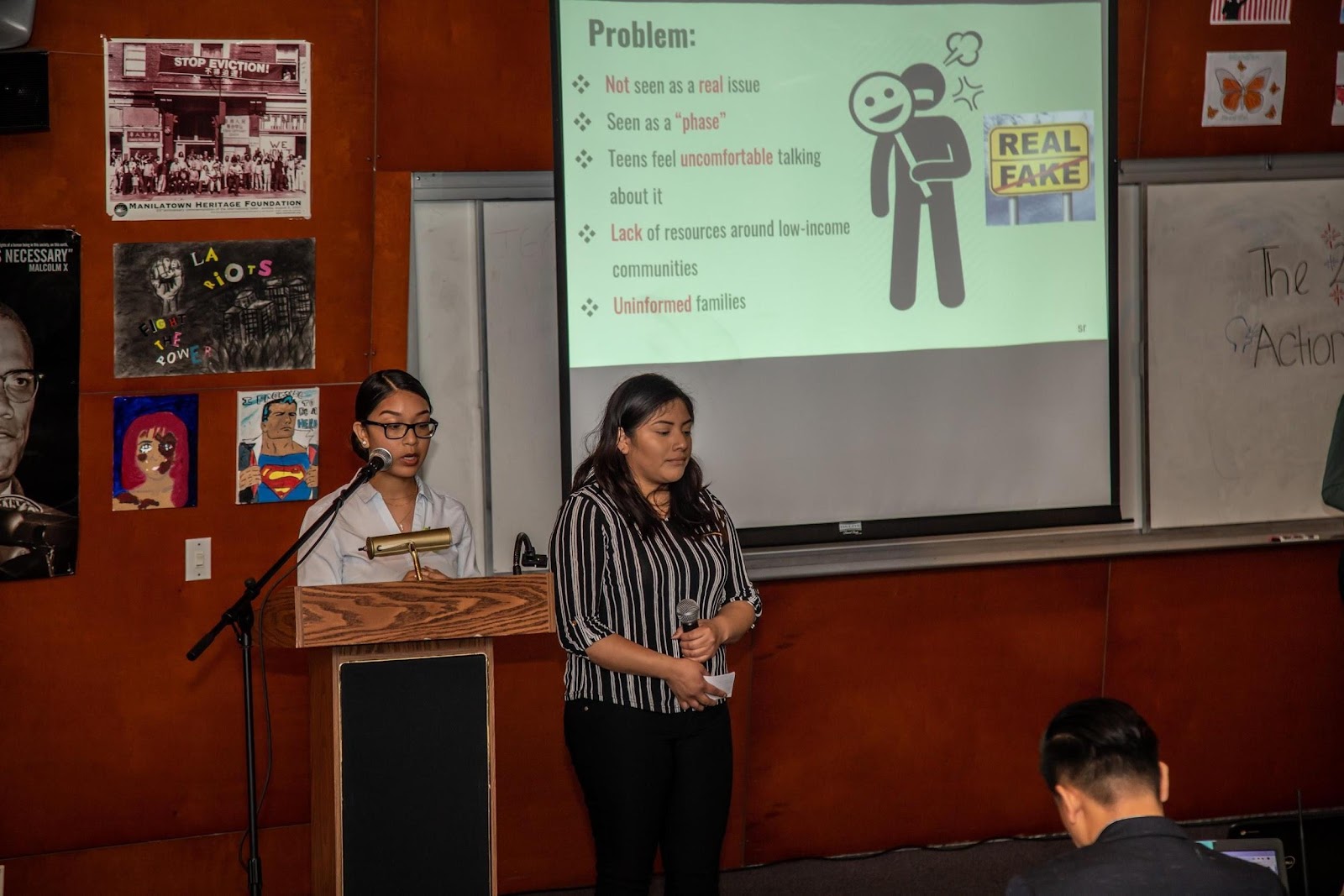
Oct 4, 2019 12:00:00 AM
Four seniors at Ánimo Jackie Robinson—a Green Dot high school that opened to bring more high-quality, public education to historic South Central Los Angeles—chose to take on mental health awareness for their senior community project. They presented to faculty, local media and a livestream audience about the importance of recognizing mental health struggles and breaking stigmas that prevent teenagers from seeking help.
If our students are leading much-needed conversations around mental health, then we can all learn from them.
Why? Currently, the Center for Disease Control and Prevention (CDC) estimates that one in five children living in the United States shows signs of a mental health disorder within any given year. Let that sink in. One in five. The rates only increase by 200% to 900% for students who regularly experience environmental stressors such as poverty, homelessness, poor access to quality healthcare or community violence. [pullquote]The alarmingly high number of students struggling with mental health demands that educators be part of the solution.[/pullquote]
We cannot expect strong academic growth and success from students who aren’t also supported mentally and emotionally. Especially as educators work to close achievement gaps in historically underserved communities, it is necessary for schools to have the resources, policies and services in place to ensure that emotional support gaps are filled alongside academic ones.

I’ll give you an example. One school in our network, Alain LeRoy Locke Academic Preparatory Academy in Watts, had 62 homicides occur within one mile of its campus in the past five years. And while it’s true that interconnected issues like inequity and community violence must be addressed on a macro-level with policy-oriented solutions, the impact on our students’ mental health is real and happening now.
Students who consistently experience the fear and trauma associated with neighboring violence are more likely to perform lower on state tests and be absent from school. If we expect students to spend most of their week in school and succeed academically, the school has a critical role to play in countering some of what affects students’ mental well-being by building a safe space for them to learn, grow and feel supported.
At Locke, we provide comprehensive mental health services with six school counselors on campus, offer programs like music therapy and activities meant to foster an environment conducive to learning. And it’s not just at Locke—across our Green Dot schools, we prioritize having at least one counselor on campus at all times. We keep the classroom student-to-teacher ratio at a level where teachers not only can provide one-on-one attention but so they can identify signs of mental health struggles and act accordingly.
[pullquote]We’re learning to not just recognize mental health struggles but destigmatize them.[/pullquote] Students and staff have participated in marches and other awareness events. Students have done curricular projects and created wall art for their campus buildings aimed at stimulating conversation around mental health. Parent workshops were offered to increase their awareness and inform them where to access support for their child.
Green Dot’s Clinical Services team of Social Workers, a full-time school psychologist at each school site, as well as school counselors who can help direct students have been the game-changing investment. We’ve also trained all administrators and teachers to know the warning signs of suicide and direct students to mental health support on campus. Students also receive awareness and prevention lessons in our classrooms and have the opportunity to refer themselves for counseling services.
The point is—whether through counseling services, student programs, awareness campaigns or a combination of all—addressing and destigmatizing mental health struggles of students is essential to advancing academic success and closing achievement gaps. All schools must prioritize allocating the resources necessary to create services and hire staffers in support of students’ mental and emotional growth.
October features Mental Health Awareness Week, but let’s use this moment to recognize that promoting awareness is not relegated to one week. This effort must be year-long and span schools and educations sectors. Only when we nurture and raise up the whole student are we as educators meeting our common goal of putting students first.
Janneth Johnson is the Director of Counseling and Student Services at Green Dot Public Schools. She has over 20 years of experience as a counselor and began counseling at Green Dot in 2003. She holds a bachelor's degree in anthropology from the University of California Los Angeles and an master's degree in education/counseling from California State University Dominguez Hills.
Few issues in education spark more tension and debate than standardized testing. Are they a tool for equity or a burden on students? A necessary check on school systems or a flawed measure of...
Charter schools are public schools with a purpose. Operating independently from traditional school districts, they're tuition-free, open to all students, and publicly funded—but with more flexibility...
Despite the benefits of a diverse teaching force, prospective teachers of color fall out of our leaky preparation pipeline at every stage: preparation, hiring, induction, and retention. Here’s what...
Ed Post is the flagship website platform of brightbeam, a 501(c3) network of education activists and influencers demanding a better education and a brighter future for every child.
© 2020-2025 brightbeam. All rights reserved.
Leave a Comment